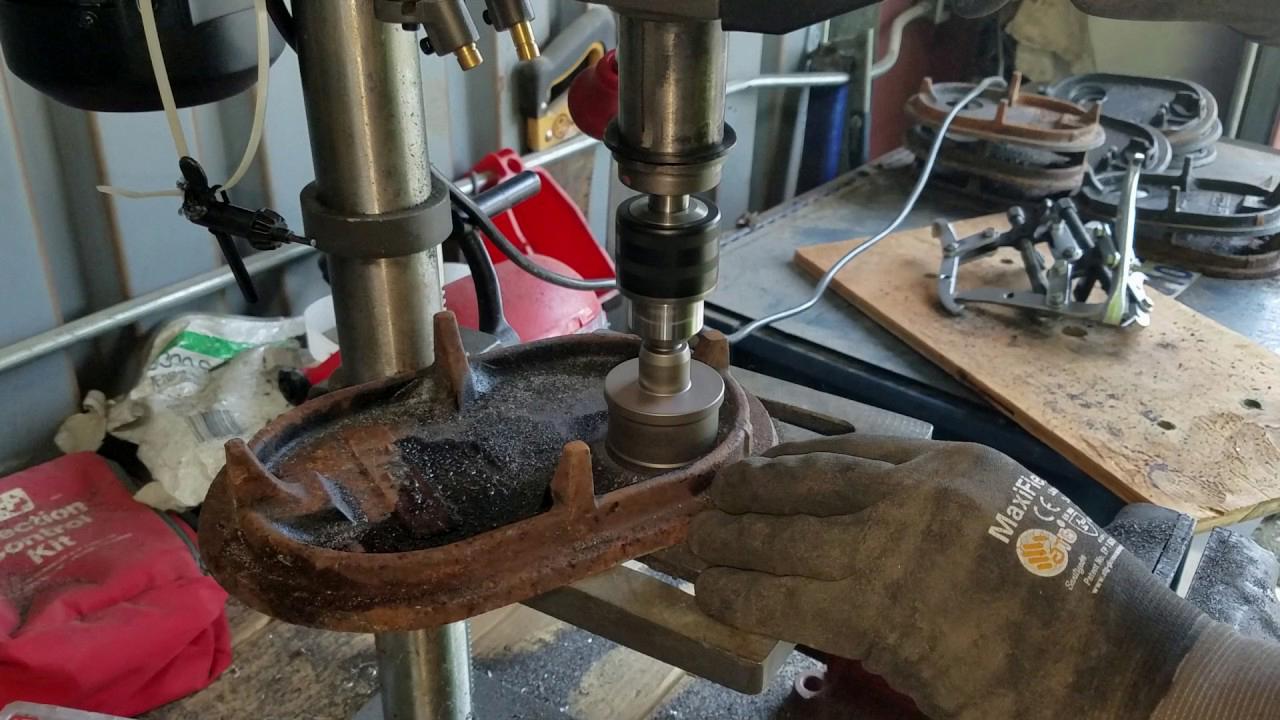Cast iron is a popular material used in a variety of applications, from cookware to industrial machinery. It is known for its strength and durability, making it ideal for many projects. However, drilling into cast iron can be a tricky process and requires special techniques to ensure successful results. In this blog post, we’ll cover some tips on how to drill into cast iron successfully.
When drilling into cast iron, it’s important to use the right type of drill bit for the job. High-speed steel twist bits are the most common type of drill bit used for drilling through cast iron, as they provide good durability and can cut effectively through the material. It’s also important to select the correct size of drill bit for the job; if you use a too-small bit it won’t penetrate far enough into the material and will quickly become worn down.
It’s also important to take extra care when drilling into cast iron, as it can be prone to cracking or chipping if not handled properly. To avoid this, you should always pre-drill with a smaller bit than desired before switching to your final size. This will create a pilot hole that will help guide the larger bit and ensure more accurate results with less chance of cracking or chipping.
When drilling through cast iron, you should take your time and use slow speeds with plenty of lubrication (oil or cutting fluid). The slower speed allows better control over the drill bit and helps reduce friction between it and the metal surface; lubrication further reduces friction and helps reduce heat build-up during drilling. If you’re using an electric drill, you should also start at a lower speed setting before gradually increasing power until you reach your desired speed.
Finally, when finished drilling through cast iron always clean up any residue left behind by wiping down with a cloth dampened with mineral spirits or acetone; this will help prevent rusting or corrosion in future use.

Can You Drill Cast Iron With A Regular Drill Bit?
Yes, you can drill cast iron with a regular drill bit. Cast iron is much more brittle than other metals and is easy to drill into. Start drilling slowly to prevent overheating and excess friction that can damage your drill bit.
There are a few different types of drill bits that can be used for drilling throgh cast iron. The best bit to use is a cobalt bit with a 135-degree point angle. This angle is sharper than that on a conventional bit, making drilling faster and more accurate. Cobalt bits are brass-colored. As an alternative, you can also use a gold-colored titanium nitride bit.
Can You Use Self Tapping Screws In Cast Iron?
Self-tapping screws are not recommended for use in cast iron, as they can easily break the screw.
What’s The Best Way To Cut Cast Iron?
When cutting throgh cast iron, a saw or cutting tool with a diamond saw blade is the best choice to make a cut in a straight line.
How Do You Tap Cast Iron?
To tap a hole in cast iron, you will need a tap wrench, a tap, and some lubricant. Place the lubricant in the hole and on the tap. Turn the tap wrench clockwise to start tapping the hole. Twist the tap wrench 1/2 turn counterclockwise if the tap binds in the hole. Continue alternating between clockwise and counterclockwise until you have a tapped hole. Remove the tap from the hole.

What Is The Difference Between 118 Degree And 135 Degree Drill Bits?
118 degree drill bits are designed for use on softer materials such as wood and aluminum, while 135 degree drill bits are designed for use on harder materials such as stainless steel. 118 degree drill bits have a more aggressive tip and a smaller chisel, while 135 degree drill bits have more pitch so they are flatter and have a longer chisel.
Can You Grind Cast Iron?
Yes, you can grind cast iron. In fact, it’s often necessary to do some light grinding in order to fix nicks and scratches in the surface. However, it’s important to be careful not to grind too deep, as this can remove too much material and weaken the pan.
Can I Cut Cast Iron With An Angle Grinder?
Yes, you can cut cast iron with an angle grinder. This is a viable option for quickly slicing through segments of cast iron pipe. However, it is important to take precautions when usng this tool, as it can be dangerous. Make sure to wear safety goggles and a mask to protect your eyes and lungs from the sparks and debris created by the grinding wheel. Be sure to hold the grinder firmly and keep your hands clear of the blade.
Can You Connect PVC Pipe To Cast Iron?
Yes, you can connect PVC pipe to cast iron using a wye fitting. The fittings will hold the PVC in place and allow the waste water to flow between the two pipes.
Can You Cut Cast Iron With A Hacksaw?
Yes, you can cut cast iron with a hacksaw. But keep this in mind: using this tool requires you to exert maximum effort and can result to a lot of hard work. It also takes a substantial amount of time, especially if you have several pipes to cut.
